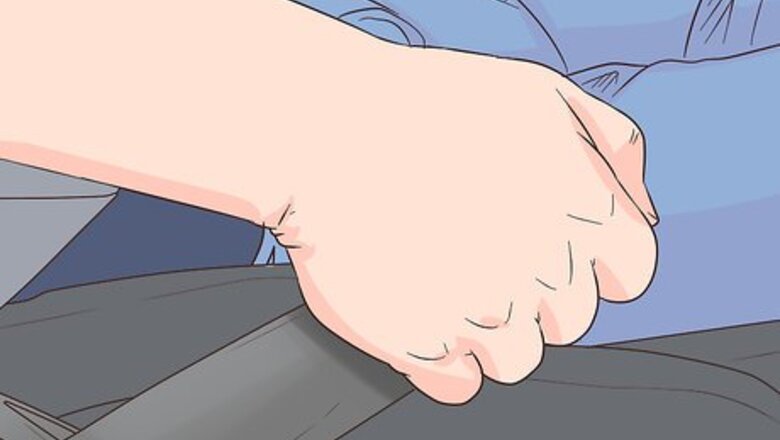
views
X
Research source
Removing the Wheels
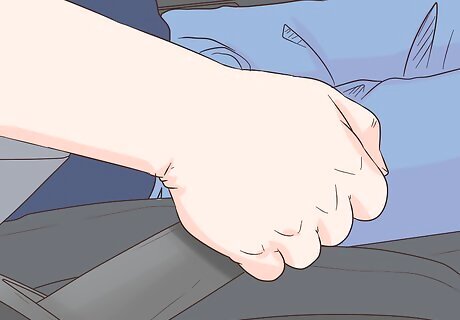
Apply the parking brake. Safety is a priority whenever you are working on a car. Before removing the wheels apply the parking brake on to make sure your car is secure.
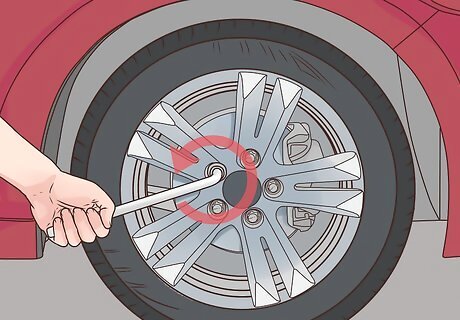
Loosen the lug nuts ¼ turn. While the tires are still on the ground, use a tire iron or air gun to turn the lug nuts and make the wheel easier to remove.
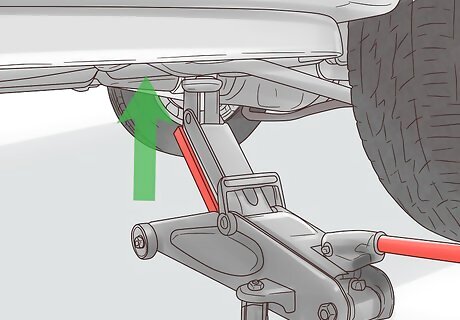
Position your jack under the frame of the car next to the wheel you are removing. Use the jack to raise the car off the ground. Check your car’s owner’s manual for proper jack placement. Lift the car high enough to slide a jack stand underneath the frame. Slowly lower the car onto the jack stand. Remove the jack to leave the car resting on the stand.
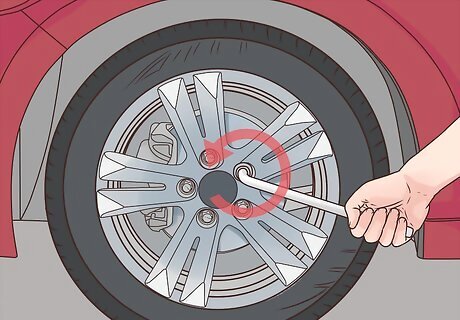
Remove the lug nuts from the wheel to remove it. Use a tire iron or an air gun to remove the lug nuts one at a time. When all the lug nuts are removed, pull the tire gently toward you. Set the wheel aside with the lug nuts.
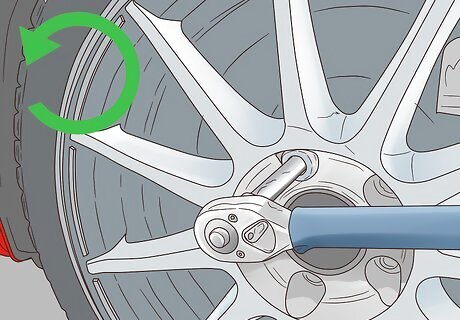
Repeat the process for all four wheels. If you don’t have four jack stands you can do one wheel at a time, but keep in mind it will take much longer while you wait for paint to dry.
Preparing the Calipers
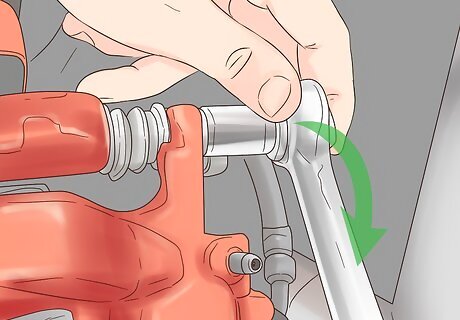
Remove the calipers from the wheel assembly. The calipers are usually held in place by one or two bolts in the rear. A ratchet wrench works best to remove the bolts securing the caliper. Do not disconnect the caliper from the brake line. Be careful not to crimp or damage the brake hose connected to the caliper. Place the caliper on a box or inverted bucket.
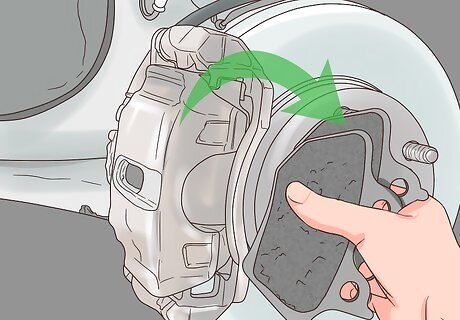
Separate the brake pads from the caliper. Brake pads usually clip in place. Locate the clips that hold the brake pads in place and gently remove the brake pads. Removing the brake pads will ensure that you don’t get paint on them and possibly compromise your car’s braking ability.
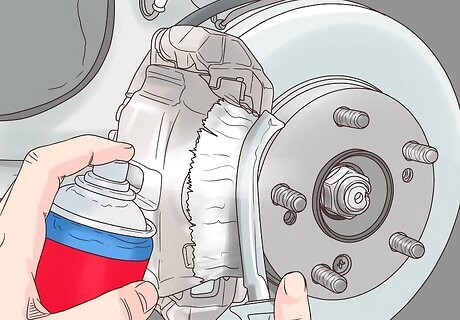
Clean the calipers thoroughly. Properly cleaning the brake calipers prior to painting will help prevent the paint from flaking off. The cleaning process is crucial to ensure that the paint sticks and you end up with a quality paint job. Use a stiff wire brush to remove any rust or built up grime on the caliper’s metal parts. Do not brush the rubber casing around the caliper pistons or they may be damaged. Dip the brush in mineral spirits or gasoline as a solvent to aid the cleaning process. Spray brake cleaner on the caliper to remove the bits loosened by the wire brush. Sand the metal parts of the caliper with a 150-200 grit sandpaper. Make sure to get all the bends and groves around the caliper. Give the caliper another cleaning with the spray on brake cleaner. Use a paper towel and rubbing alcohol to clean the calipers one final time.
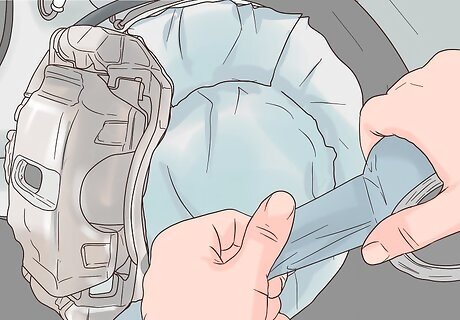
Use tape and newspaper to mask the area around the caliper that is not being painted. Take time to carefully cover everything around the caliper so you don’t get overspray in unwanted locations. Tape the rubber protectors around the caliper pistons. Wrap the brake rotor in newspaper to protect it from paint Cover the panels around the wheel with paper so you don’t get paint on the car.
Painting the Calipers
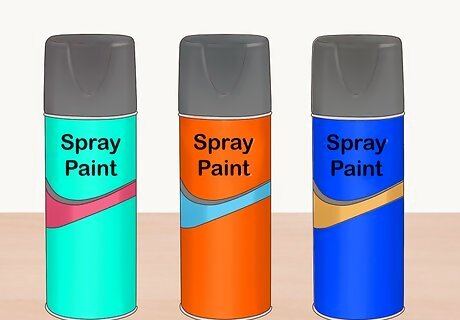
Select a high quality paint. Calipers are exposed to very high temperatures during braking. Choose a paint that is heat resistant or developed specifically for calipers. Specialty caliper paints can be purchased from auto parts stores. Purchase a heat tolerant spray paint from your local hardware store. Make sure the paint is designed for use on metals.
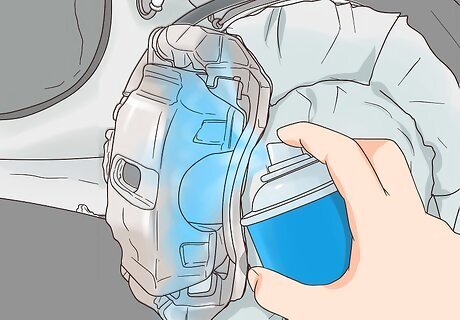
Paint the caliper one side at a time. Spray multiple coats to achieve an even paint job. Do not apply spray paint in thick coats or you will get drips and runs in your paint. Spray smoothly and from different angles to get maximum coverage. Shake the can and follow the label directions on the paint can. Spray short bursts, not a continuous stream of paint. Move the can from side to side as you spray. Wait 5 minutes between coats of paint. Spray 3 to 4 coats on the top side of the caliper.
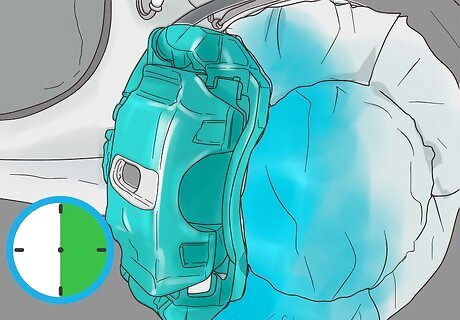
Allow the caliper to dry for 30 minutes, then paint the other side. After applying multiple coats to one side of the caliper, wait for it to dry to the touch before turning it over. Repeat the painting process on the opposite side of the caliper Be gentle when turning the caliper so you don’t twist the brake line. You do not need to paint the inner portion of the caliper as this isn’t seen and may affect the performance of your brakes.
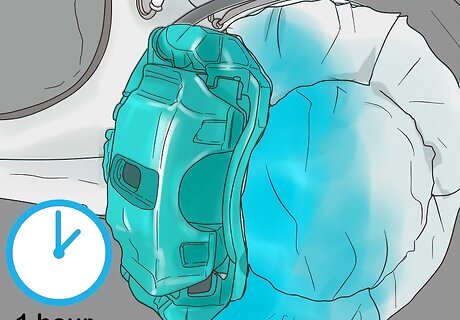
Allow the paint to dry for one hour before replacing the caliper. Depending on the temperature and humidity, the time it takes for your paint to dry may vary. You don’t want to ruin all your hard work, so make sure the paint is completely dry before replacing the caliper.
Finishing the Job
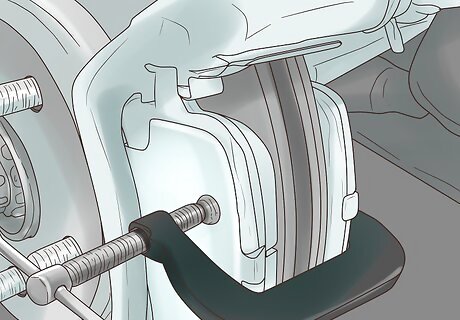
Click the brake pads back in place on the caliper. This may be a good time replace your brake pads if they are beginning to wear thin. Use a C-clamp to compress the caliper piston to position the brake pads properly. Bolt the caliper back in place around the brake rotor. Place the caliper back around the rotor and replace the bolts that you removed to take the caliper off. Make sure the bolts are tight to securely reassemble your brake system. Important:Take care not to twist or crimp the brake line.
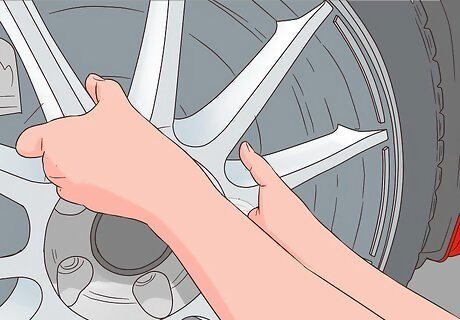
Position the tire back on the car. Place the tire on the bolts attached to the wheel assembly. Hand tighten the lug nuts onto the bolts. Use a tire iron or an air gun to tighten the lug nuts. Tighten the lug nuts in a criss-cross pattern alternating sides rather than in a circular pattern.
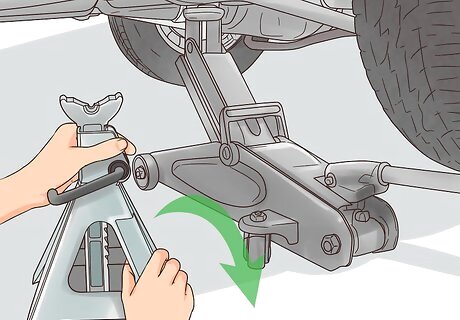
Use a jack to remove the car from the jack stand. Slowly raise the car about an inch to slide the jack stand out from under the car. Remove the jack stand. Lower the car to the ground. Double check that your lug nuts are securely tightened.

Wait 24 hours for the paint to cure completely. It may be hard to resist taking your fresh calipers out for a spin, but waiting the added time will ensure that the paint cures to the metal and doesn’t peel off due to the heat of braking. Alternatively, if you want to replace an old brake caliper with a new one, you should remove it from the axle to do that. Take out the bolts and remove the caliper from the caliper bracket. While replacing it, run a brake flush through the system to ensure the pressure is consistent.
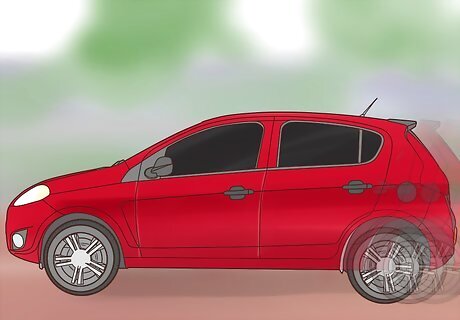
Take the car out for a test drive. Make sure your brakes are working properly. Enjoy the looks from the people you pass admiring your newly painted calipers.











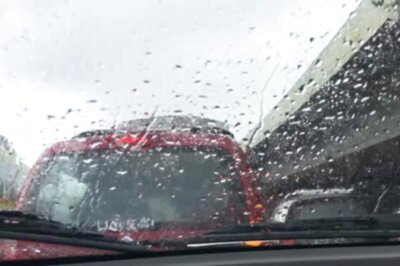








Comments
0 comment